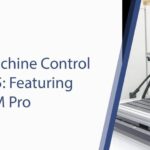How Ai and Machine Learning in CNC Machining Are Transforming
The integration of Artificial Intelligence (AI) and Machine Learning (ML) into CNC (Computer Numerical Control) machining marks a major leap in industrial innovation.
What was once purely mechanical has evolved into an intelligent, data-driven ecosystem that learns, adapts, and optimizes itself over time.
These technologies are not just improving speed and precision—they are redefining the very nature of manufacturing by enabling smarter, more sustainable operations.
Today, CNC machines equipped with AI and ML capabilities can anticipate failures, optimize cutting parameters, predict tool wear, and improve energy efficiency.
As a result, factories are becoming more autonomous, efficient, and environmentally responsible—ushering in a new era of smart manufacturing.
Understanding CNC Machine Tools
CNC machines are automated systems designed to execute machining operations with high precision and repeatability. They rely on G-code instructions, which guide every movement—from spindle speed to tool position—to craft parts from metal, plastic, or composites. Industries such as aerospace, automotive, and medical manufacturing depend on CNC for its unmatched accuracy and scalability.
However, traditional CNC systems operate on fixed instructions. Once programmed, they follow commands without deviation—even if cutting conditions change. This is where AI and ML step in, adding adaptability and intelligence to the process.
The Role of AI and ML in CNC Machining
AI and ML bring a new level of responsiveness to CNC machining. They transform static systems into learning machines capable of analyzing data, making predictions, and optimizing performance automatically.
Key Applications of AI and ML in CNC
- Predictive Maintenance
- Tool Wear Prediction
- Optimization of Machining Parameters
- Energy Consumption Prediction
- Surface Quality Prediction
Let’s explore each of these in detail.
Predictive Maintenance: Preventing Downtime Before It Happens
Downtime remains one of the biggest cost drivers in manufacturing. Through AI and ML, machines can now forecast component failures before they occur. By analyzing real-time data from vibration sensors, temperature monitors, and spindle loads, predictive models can pinpoint early signs of mechanical stress.
How Predictive Maintenance Works
- Data Collection: Sensors track operational data continuously.
- Pattern Recognition: ML algorithms identify patterns that precede malfunctions.
- Prediction and Action: The system forecasts failures, enabling maintenance teams to act before breakdowns happen.
Benefits:
- Reduced unplanned downtime
- Lower repair and maintenance costs
- Extended equipment lifespan
This proactive approach allows manufacturers to shift from costly reactive maintenance to predictive intelligence, keeping production lines running smoothly.

2. Tool Wear Prediction
Tool wear is a significant concern in CNC machining. ML models, particularly neural networks, can predict tool wear by analyzing parameters such as cutting forces and vibration signals.
This capability helps in scheduling timely tool changes, thereby reducing costs and improving machining accuracy.
3. Optimization of Machining Parameters
Optimizing machining parameters is essential for achieving high precision and efficiency.
ML algorithms analyze historical data to determine the best settings for different materials and cutting conditions.
This optimization leads to better surface finishes, higher productivity, and reduced energy consumption.
4. Energy Consumption Prediction
Reducing energy consumption is not only cost-effective but also environmentally friendly.
AI models predict energy usage patterns, enabling manufacturers to implement energy-saving measures.
This approach aligns with sustainable manufacturing practices, reducing the carbon footprint of CNC operations.
5. Surface Quality Prediction
Surface quality is a critical metric in manufacturing.
ML techniques can predict the surface finish of machined parts, ensuring that the final product meets stringent quality standards.
This prediction is based on various factors, including tool condition, material properties, and machining parameters.
In-Depth Focus: Optimization of Machining Parameters
Machining parameters—such as spindle speed, feed rate, and depth of cut—form the backbone of machining efficiency, accuracy, and quality. Each of these variables influences vibration levels, surface finish, tool life, and energy consumption. Traditionally, these parameters were set manually based on operator experience and historical results. However, this approach was often limited by human intuition and trial-and-error, resulting in inconsistent outcomes.
Understanding Machining Parameter Optimization
AI and ML revolutionize parameter optimization by processing massive datasets collected from CNC sensors and controllers. These systems evaluate spindle load, torque, cutting temperature, and vibration data to identify correlations between inputs and machining outcomes. The algorithms then predict which combination of parameters will produce the best balance between speed, quality, and tool longevity.
Traditional vs. AI-Driven Optimization:
- Manual setups rely on experience; AI relies on data-driven analysis.
- Human judgment adjusts parameters slowly; ML models adapt instantly in real time.
- Operators monitor performance manually; AI systems monitor continuously across multiple machines.
Process Overview
- Data Collection: Sensors record temperature, vibration, cutting forces, spindle power, and feed rate during active machining cycles.
- Data Processing: ML algorithms process these datasets, recognizing patterns between machining variables and performance outcomes such as surface finish or tool wear.
- Optimization: The system recommends new machining parameters—or automatically updates them—to maximize throughput, quality, and energy efficiency.
Case Study: Surface Finish Improvement in Titanium Machining
In a practical industrial study involving titanium alloy machining, engineers applied ML algorithms to optimize spindle speed and feed rates for complex geometries. The AI model analyzed over 50 machining runs, correlating spindle load and vibration data with surface quality metrics. It identified previously unseen inefficiencies and proposed optimized parameters.
Steps Involved:
- Initial Data Collection: Real-time data on cutting forces, tool wear, and surface finish were captured from early runs.
- Model Training: The ML model was trained on this dataset to predict surface roughness outcomes for various parameter combinations.
- Parameter Adjustment: Based on predictions, the system adjusted spindle speed and feed rate to reduce chatter and maintain optimal cutting temperature.
- Implementation and Testing: Engineers validated the AI-generated parameters in live production runs.
Results:
- Enhanced Surface Quality: Surface roughness improved by over 30%, delivering near-polished finishes that met aerospace-grade specifications.
- Extended Tool Life: Tool wear decreased by 20%, cutting replacement costs and reducing maintenance interruptions.
- Increased Efficiency: Cycle times dropped by 15%, translating to faster production and lower energy consumption.
AI-based optimization transforms CNC machining into a continuously improving system—one where data replaces guesswork, and machines evolve toward perfection with every cycle.

Benefits of AI and ML in CNC Machining
- Increased Efficiency: Automation reduces downtime and maximizes output.
- Cost Savings: Predictive models prevent expensive failures and overuse of resources.
- Improved Quality: AI-driven optimization delivers superior surface finishes and dimensional accuracy.
- Sustainability: Energy predictions promote eco-friendly operations.
- Data-Driven Decision Making: Operators gain insights that continuously refine performance.
Conclusion: The Future of Intelligent CNC Machining
The integration of AI and ML in CNC machining represents more than a technological upgrade—it’s a paradigm shift.
Machines are now capable of learning, adapting, and optimizing in real time, leading to unprecedented levels of precision, efficiency, and sustainability.
As research continues, the boundary between automation and intelligence will fade further. The factories of the future will rely on autonomous CNC systems that not only execute commands but also think, predict, and evolve.
At Radonix, with over 16 years of experience in CNC control system design, we are proud to contribute to this revolution. Our advanced controller technologies are engineered to support AI integration, driving performance and innovation across global manufacturing industries.
Contact Us:
- E-Mail: info@radonix.com
- Phone: +90 (553) 920 5500








